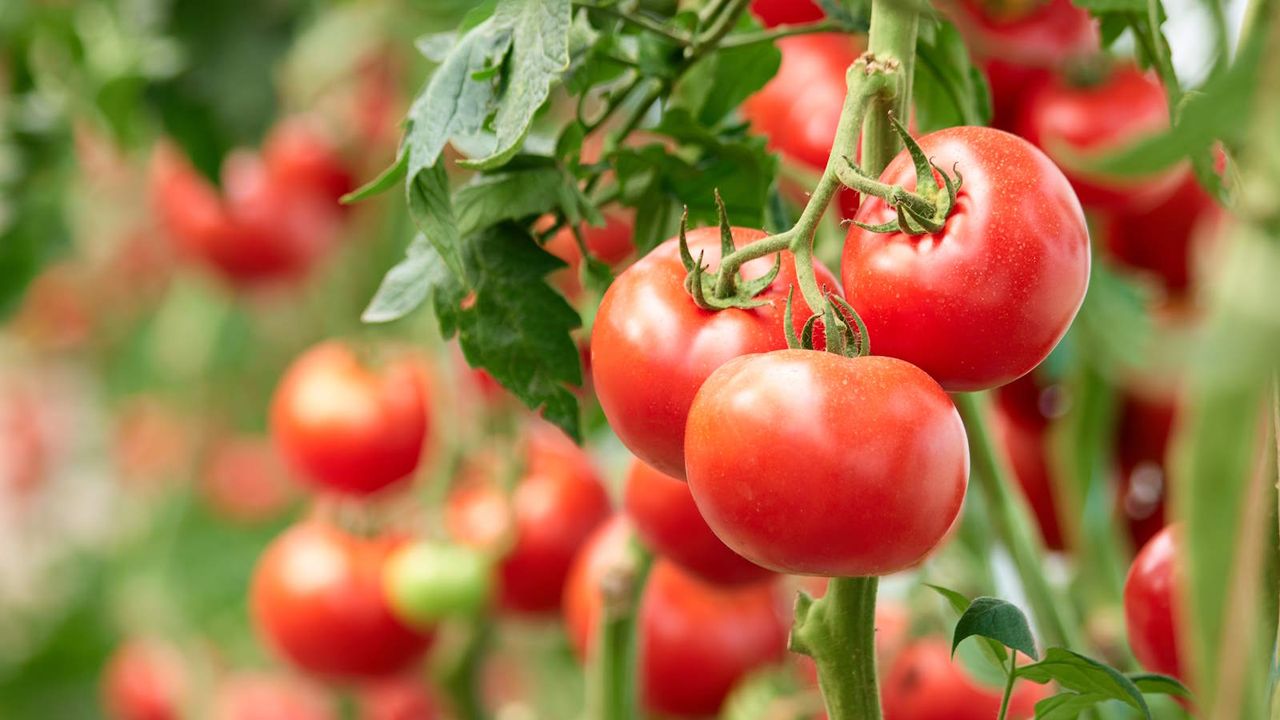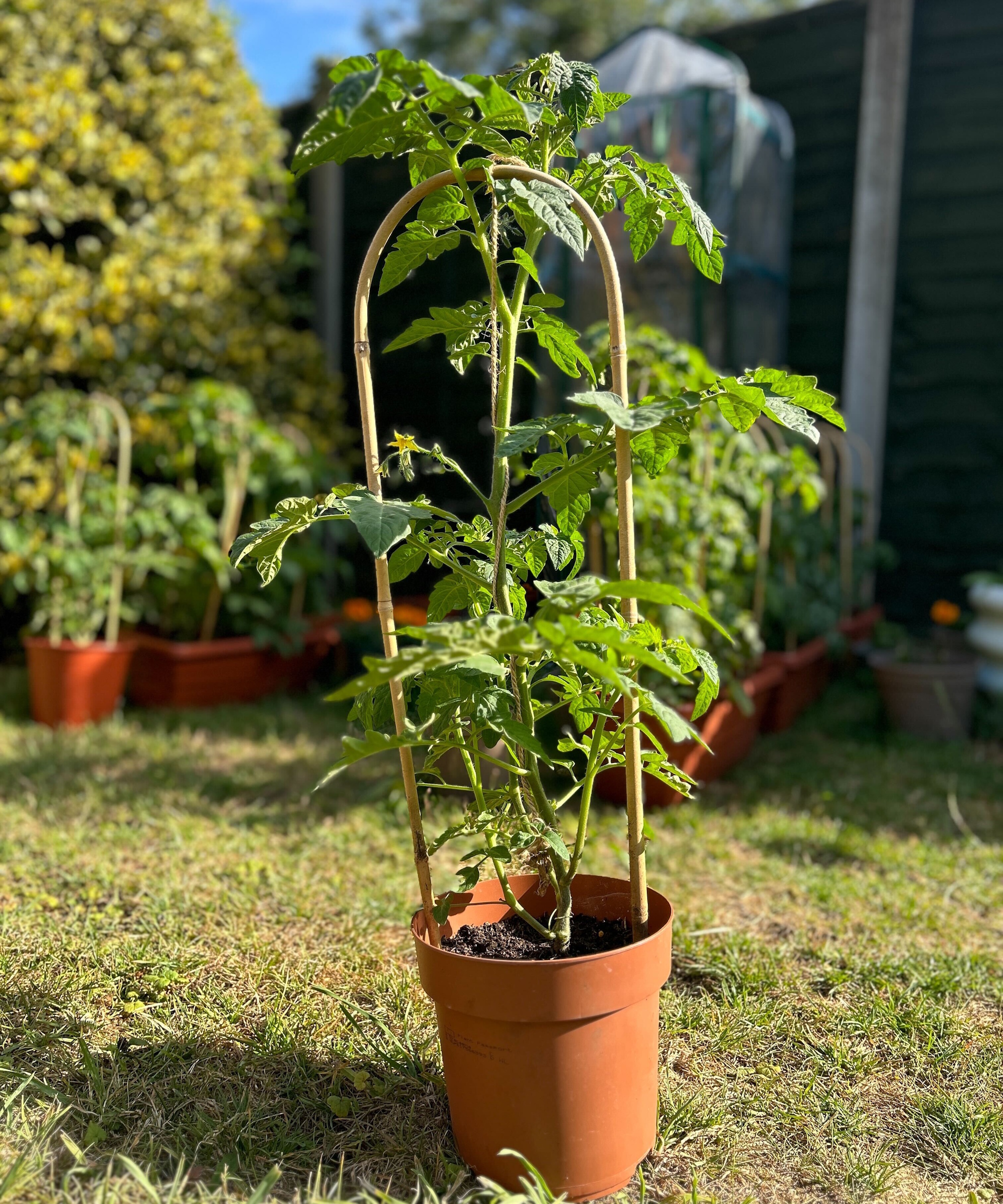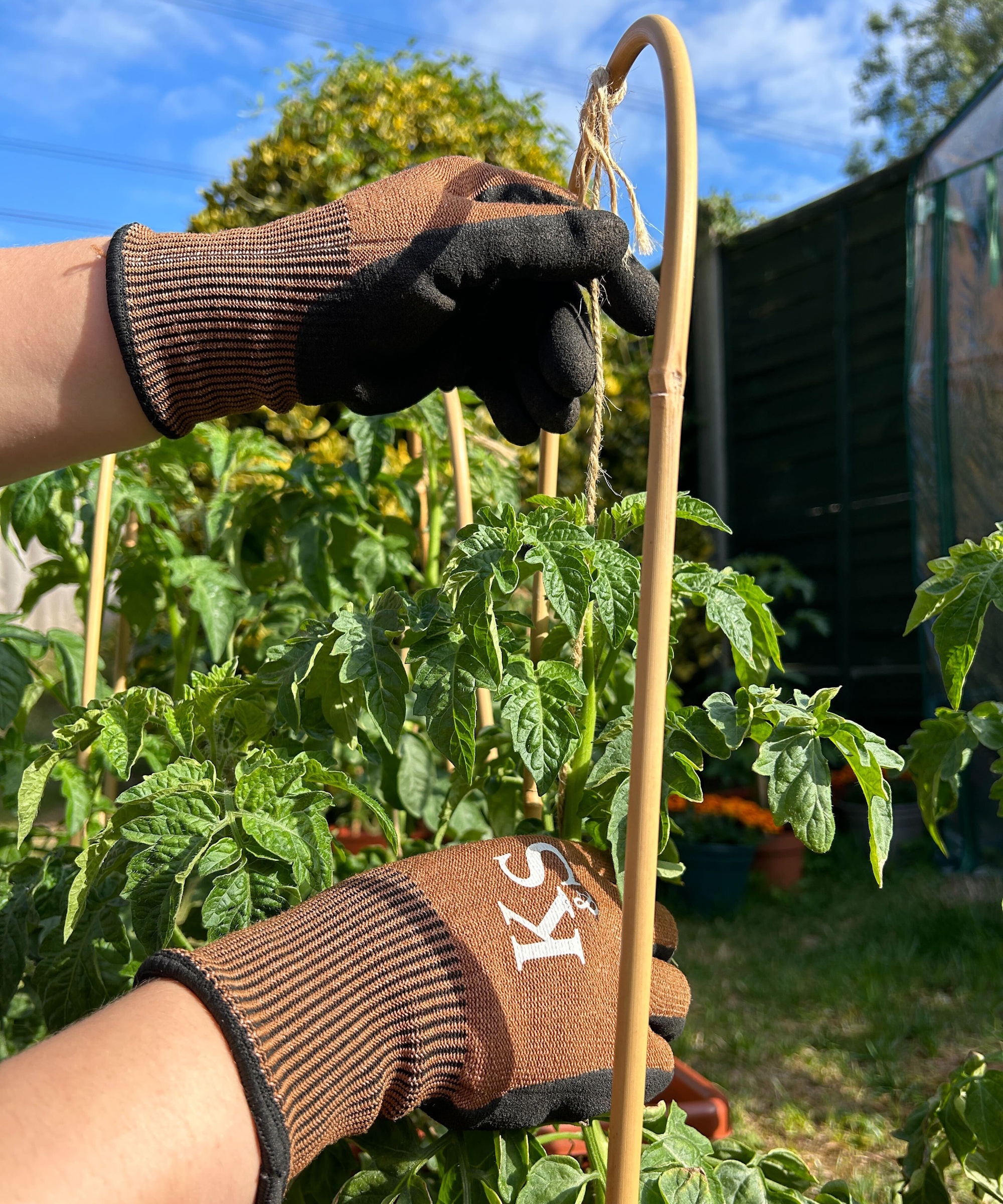
This is the first year in my garden and I've jumped straight in with growing vegetables. Keen to get it right the first time, I did a lot of research to find beginner-friendly methods that suit my outdoor space. That's when I stumbled across the tomato string method, an incredibly simple but effective way to grow tomato plants healthily for an abundant harvest.
Of course, there's a never-ending list of methods you can try to grow tomatoes, but I was looking for something that specifically works in pots. That's what makes the tomato string method a perfect option. It essentially involves using a single piece of string to tie up a tomato stem and train it vertically, making it both a space-saving and low-cost method.
It also helps prevent a range of tomato growing mistakes, improving air circulation between stems to prevent pests and fungal diseases. As a result, my tomato plants continuously put on new growth, there aren't any flopping stems, and fruit has developed quickly. Here, experts explain more about the benefits of the tomato string method and I share how to easily recreate it in your yard.
What is the tomato string method?

As seen in the image above, the tomato string method is exactly what it sounds like. It's a vertical set-up, where a piece of string (like this from Walmart) holds up your tomato stems.
'To maximize the quality and quantity of your yield, train your vine to grow vertically. By orienting vines upward, tomatoes are guided towards optimal cultural conditions,' explains vegetable growing expert, Andy Thewlis.
It works best for indeterminate (vining tomatoes) over determinate tomatoes, which grow continuously through the season and need extra support as they get taller. I'm using this method for Gardeners' Delight cherry tomatoes (seeds from Burpee).
As well as offering a plant support system, there are many other benefits to using the tomato string method.
I haven't had any issues with common tomato diseases, including tomato leaf curl, tomato blight, or powdery mildew, while using this method, thanks to the maximized air circulation this set-up provides. Plus, tomato pests have stayed away, with less hiding spots where the vertical growing habit exposes the foliage and stems.
'It also keeps foliage drier and healthier and allows for better sun exposure, ensuring fruits and leaves get ample light, which improves ripening and flavor,' notes gardening expert Michael Clarke.
Of course, if you have a small garden or container garden, being able to grow tall healthy tomato plants in pots using this method is also ideal.
'It allows you to grow more plants in less ground space, and because the fruits stay off the ground, they are easier to see, pick, and prune,' Michael adds.
How to use the tomato string method

You only need a handful of materials for the tomato string method. This includes string or garden twine (from Amazon) and a plant stake with overhead support. I use these bamboo hooped stakes (from Amazon) which work well in my container set-up.
'It's best to choose a plant stake that is taller than the ultimate height of your tomato plant, to provide support for its future growth,' notes Drew Swainston, Gardens Content Editor at Homes & Gardens.
'This will prevent your tomato stems flopping and becoming damaged in the event of you needing to install taller stakes and new string as the plants grow bigger,' he explains.
Start by installing your string, which Drew suggests should be placed beneath the roots of the plant.
'Bury the string underneath the plant’s rootball when you plant your tomatoes. Positioning the string beneath the soil surface helps to stabilize it and prevent any risk of the string potentially snapping the stem in strong winds if it is secured to it,' he says.
Alternatively, you can use a ground stake (from Amazon) to attach the bottom of your string to.
Then, attach the top of the string to your plant support, so it creates a straight vertical line.
The next part is key for the method to work: you need to gently wrap the tomato plant stem around the string. As it grows taller, keep wrapping it around, as seen in the image above.
This leaves you with a tomato plant climbing up the string, standing upright.
Shop essentials for the tomato string method
Use these hooped plant supports to offer a structure for your tomato string set-up.
Natural jute twine is a good option for staking plants because it's soft and less likely to cause damage to stems.
I'm using large nursery pots to grow my tomatoes using the string method. The benefit is they have drainage holes, aiding moisture management.
Don't forget to check on your tomato plant regularly

One mistake you should be careful to avoid with the tomato string method is leaving your plant be. This method does require regular checking and adjusting – as new growth appears, wrap it around the string to continue supporting it.
The other benefit of this method is that it makes it easy to prune tomato plants. I find the string method offers easy access to remove 'suckers' (those shoots that quickly appear between the main stem and branches) and superfluous foliage, allowing more sunlight access to the tomato fruits and increasing tomato yields.
'As your tomato vine climbs upwards, remove foliage located near the surface of the soil. Pruning lower foliage promotes air exchange under the plant and reduces the chance of soil borne disease leaping up from the ground,' says Andy.
FAQs
When should you stake tomato plants?
It's wise to stake tomato plants while they are still young and flexible, as it makes it easier to set them up in their final growing position. Aim to stake them when they are roughly 12–18 inches tall. Having said that, it's not too late to stake tomato plants if they are a lot bigger and struggling to stand up straight, though there will be less flexibility to work with.
I owe the lack of problems I've had with my tomato plants to this method. It makes it easy to monitor for pests, keeps the growing environment optimal, and encourages lots of new growth.
But, it isn't the only thing I'm doing to ensure I have tomato growing success. I also planted marigolds with my tomatoes as pest-repellent companion planting, and chose a sunny position to encourage fruiting. If you're tomatoes aren't fruiting, it might just be you need to adjust the growing environment.







